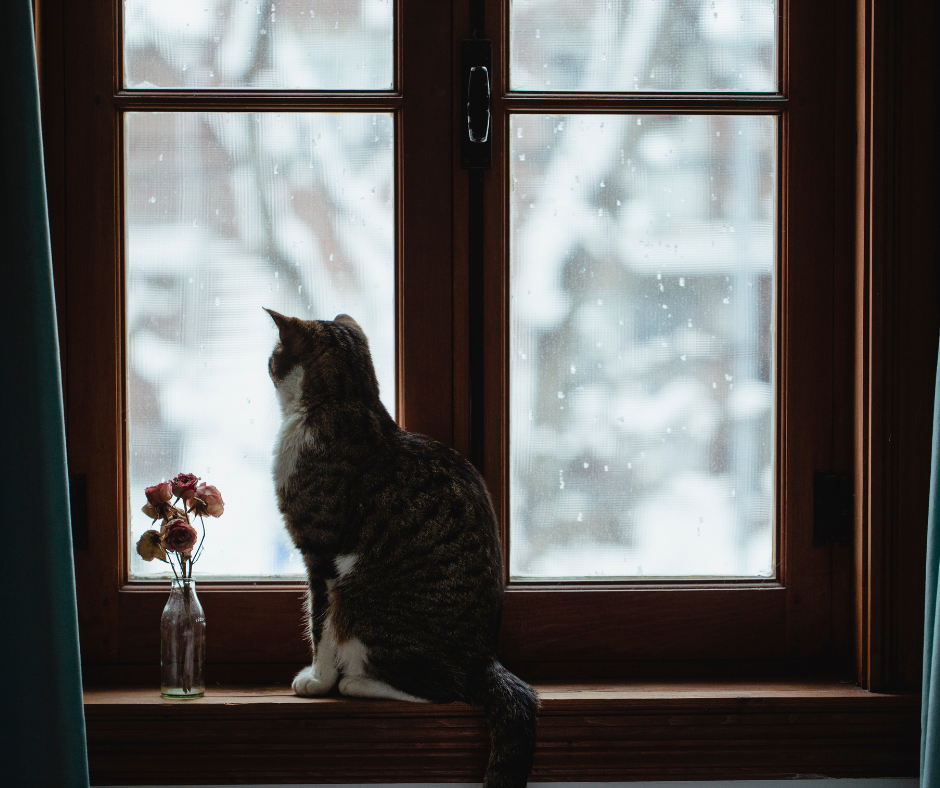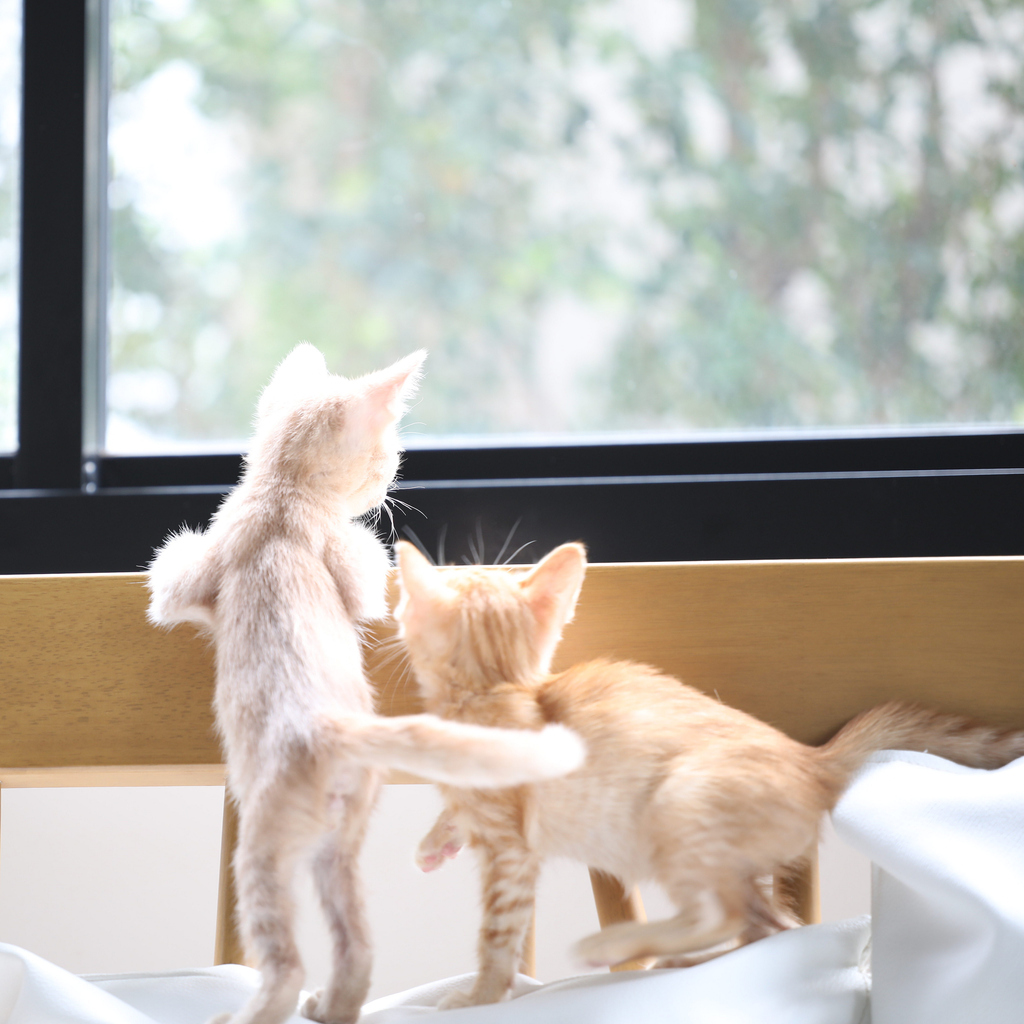Frequently Asked Questions
Can cats recognise and mimic specific bird species calls?
Cats can recognise specific bird species calls, but they typically do not mimic them accurately. Their vocalizations are more about expressing excitement or frustration rather than an attempt to imitate bird sounds.
Do cats use vocalisations to mimic bird sounds?
Cats do use vocalisations that can resemble bird sounds. This behavior may stem from their instinctual hunting drives, as they express excitement or frustration when observing birds, rather than a true attempt to mimic.
Do cats try to communicate with birds in their natural habitat?
Cats do not try to communicate with birds in their natural habitat. Instead, their chattering is often a mix of excitement and frustration, stemming from their instinctual hunting behavior rather than an attempt to convey a message.
Why do indoor cats chatter at birds?
Indoor cats chatter at birds due to a mix of excitement and frustration, reflecting their instinctual hunting behavior. This vocalization may signify their desire to hunt, even when they are safely indoors.
Why do cats chatter when they see birds through a window?
Cats chatter when they see birds through a window due to a mix of excitement and frustration, reflecting their instinctual hunting behavior. This vocalization may indicate their desire to pounce, even though they are confined indoors.
Why do cats chatter at birds?
Cats chatter at birds due to a mix of excitement and frustration, reflecting their instinctual hunting behaviour rather than an attempt to communicate. This vocalisation often occurs when they spot potential prey, showcasing their predatory instincts.
Are there any recorded instances of cats and birds conversing?
Recorded instances of cats and birds conversing are exceedingly rare. While cats may vocalize or chatter at birds, this behavior is typically driven by instinct rather than actual communication.
Why do cats chatter their teeth at birds?
Cats chatter their teeth at birds due to a mix of excitement and frustration. This vocalization often reflects their instinctual hunting behavior, as they are expressing their eagerness to catch their prey while being unable to do so.
Can cats and birds develop a friendship through vocal interactions?
Cats and birds cannot develop a true friendship through vocal interactions. While they may communicate through sounds, their natural instincts often prevent a genuine bond, as cats are predatory by nature.
Why do cats chatter when they see birds?
Cats chatter when they see birds due to a mix of excitement and frustration. This instinctual vocalization may reflect their hunting drive, as they instinctively mimic the sounds of their prey while being unable to reach it.
Why do cats seem fascinated by birds chirping sounds?
Cats are fascinated by birds chirping sounds because these vocalizations trigger their natural hunting instincts, evoking excitement and curiosity. The combination of the sounds and the sight of birds stimulates their predatory behaviour, making them eager to engage.
Do birds respond to a cats meowing or purring sounds?
Birds do not typically respond to a cat's meowing or purring sounds. These vocalizations are not recognized by birds as communication, and they may remain indifferent or unaware of the cat's presence.
Can a cats vocal tone convey messages to birds?
A cat's vocal tone can convey various emotions, but it does not communicate specific messages to birds. Instead, chattering often reflects a mix of excitement and frustration at the sight of potential prey.
Do domesticated cats vocalise differently towards birds than feral cats?
Domesticated cats vocalise differently towards birds than feral cats. While both may exhibit chattering, domesticated cats often do so in response to their owners and environmental stimuli, reflecting their learned behaviours, whereas feral cats rely more on instinctual vocalisations.
Do different cat breeds exhibit unique vocalisations towards birds?
Different cat breeds may exhibit unique vocalisations towards birds, as each breed has distinct traits and temperaments that influence their communication style. However, individual variation among cats often plays a more significant role than breed alone.
Cats chatter when they see birds?
Cats chatter when they see birds because this behavior often reflects a mix of excitement and frustration, stemming from their instinctual hunting drive. It's not a form of communication but rather an expression of their predatory instincts.
Why do cats teeth chatter when they see birds?
Cats' teeth chatter when they see birds due to a mix of excitement and frustration, reflecting their instinctual hunting behaviour rather than an attempt to communicate. This vocalization indicates their desire to catch the bird while being unable to do so.
How do cats react to bird calls?
Cats react to bird calls with a mix of excitement and instinctual behavior, often chattering or vocalizing as they display their hunting drive, reflecting both their fascination and frustration at not being able to pursue the birds.
What triggers a cats chattering behaviour?
The triggers for a cat's chattering behaviour include excitement and frustration, often observed when they see birds or other prey animals. This instinctual response reflects their hunting instincts and desire to engage with the target.
Do cats chatter more at certain bird species?
Cats may chatter more at certain bird species, particularly those that are small, fast-moving, or perceived as prey. This behavior often reflects their instinctual excitement and frustration when observing these birds.
How does chattering affect a cats hunting instincts?
Chattering affects a cat's hunting instincts by showcasing their excitement and frustration when observing potential prey, like birds. This behaviour may indicate a strong predatory drive, reflecting their natural instincts and enhancing their overall hunting skills.
What does a cats chatter signify emotionally?
A cat's chatter signifies a mix of excitement and frustration. This vocalization often occurs when they observe birds or other prey, reflecting their instinctual hunting drive and emotional response to the tantalising presence of potential targets.
Can chattering indicate a cats frustration?
Chattering can indicate a cat's frustration. This behavior often arises when they see birds or other prey but cannot reach them, reflecting a mix of excitement and the inability to act on their instincts.
How do cats perceive birds through windows?
Cats perceive birds through windows as intriguing prey, stimulating their hunting instincts. The movement and sounds of birds trigger excitement and frustration, leading to behaviors like chattering as they express their desire to engage with the elusive creatures outside.
Do cats chatter when they see other animals?
Cats do chatter when they see other animals. This behavior often indicates a mix of excitement and frustration, as they instinctively react to the presence of potential prey or competitors.
What role does play have in cat chattering?
The role of play in cat chattering is significant as it channels their natural hunting instincts. Engaging in play mimics the excitement and frustration cats feel when observing birds, helping to satisfy their predatory drive while providing mental and physical stimulation.
How can owners interpret their cats chattering?
The interpretation of a cat's chattering can reveal their excitement and frustration when observing birds. This behavior often indicates a strong hunting instinct, suggesting they are stimulated yet unable to act on their predatory desires.
Are there specific times when cats chatter more?
Cats tend to chatter more during moments of heightened excitement or frustration, particularly when they spot birds or other small animals outside. This behavior often peaks during dawn and dusk, aligning with their natural hunting instincts.
What environmental factors influence cat chattering behaviour?
The environmental factors that influence cat chattering behaviour include the presence of birds or other prey nearby, visual stimuli from windows or outdoor spaces, and the overall excitement or frustration experienced by the cat in response to these stimuli.





